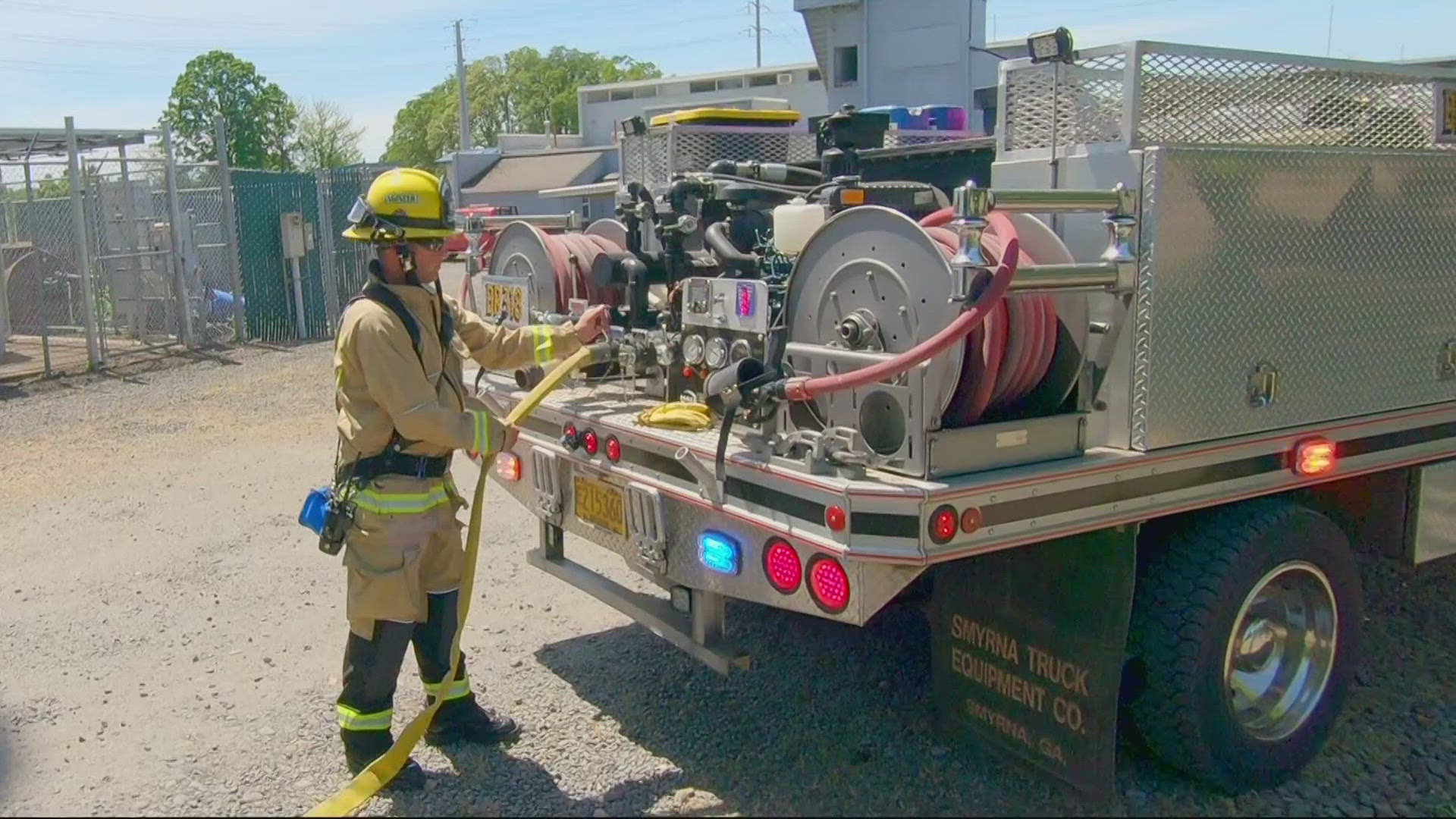SALEM, Oregon — In seconds, firefighters for Marion County Fire District 1 are out of their truck, hooking up a hose and lugging it into a field.
"When you call, the public calls, we want to be there and get to moving within 60, 90 seconds," said Kyle McMann, fire chief for Marion County Fire District 1.
This is week two of training for McMann's firefighters who are preparing for wildfire season, which is typically May through August. Training is critical for these crews, as they're structural firefighters the remainder of the year.
About ten minutes down the road from the fire station, state agencies from across Oregon met at the capital on Wednesday to discuss the impending wildfire season.
"July, August, September — that’s really the three-month stretch," said Chris Cline, Fire Protection Chief for the Oregon Department of Forestry (ODF).
Cline said that fire conditions will be most severe in July and August, and the state could see an above-average fire season in eastern Oregon.
"Even though our snowpack is mostly above normal, and our rain totals around the state are mostly above normal for this time of year, the drought still persists," said Cline.
Cline said meetings like this one are an important opportunity to make sure all state agencies are on the same page, including public utilities.
"The commission is focused on working closely with investor-owned utilities Pacific Corp, PG&E and Idaho Power," said Public Utility Commission Executive Director Michael Grant. "It's up to utilities who know their systems the best to make sure they’re operating those systems safely and effectively."
Grant claims they're prepared in the event a power grid needs to be shut down.
Cline and Oregon State Fire Marshal Mariana Ruiz-Temple added that they're working closely with other states to ensure Oregon has extra support if needed.
"The Oregon State Fire Marshal also held a border meeting with the state of California in preparation in advance of sharing resources, should we need that," Ruiz-Temple said.
While partnerships are crucial, Cline and McMann said it's the firefighters on the front lines who will make the biggest impact this summer.
"You need a person to take that hose and put out that fire and make decisions because it is so dynamic," McMann said.
But he added that getting boots on the ground is becoming increasingly difficult, especially for smaller, volunteer-based fire departments. McMann said his volunteer numbers are half of what they were in 2001.
It's a difficulty Cline has also faced. He said ODF hires hundreds of seasonal firefighters, which brought their staff up to 700 this year.
"Without our men and women on the ground initial attacking and fighting these fires, then we'd be in a much more dire situation," Cline said.
Cline added that although training and preparedness is similar year to year, they're always looking for the best technology.
"[We are] beta testing one of our firefighting helicopters with night vision, so that’s kind of breaking ground for the state of Oregon," Cline said.
Gov. Tina Kotek was supposed to attend the meeting but had a scheduling conflict, according to a spokesperson from the governor's office.

